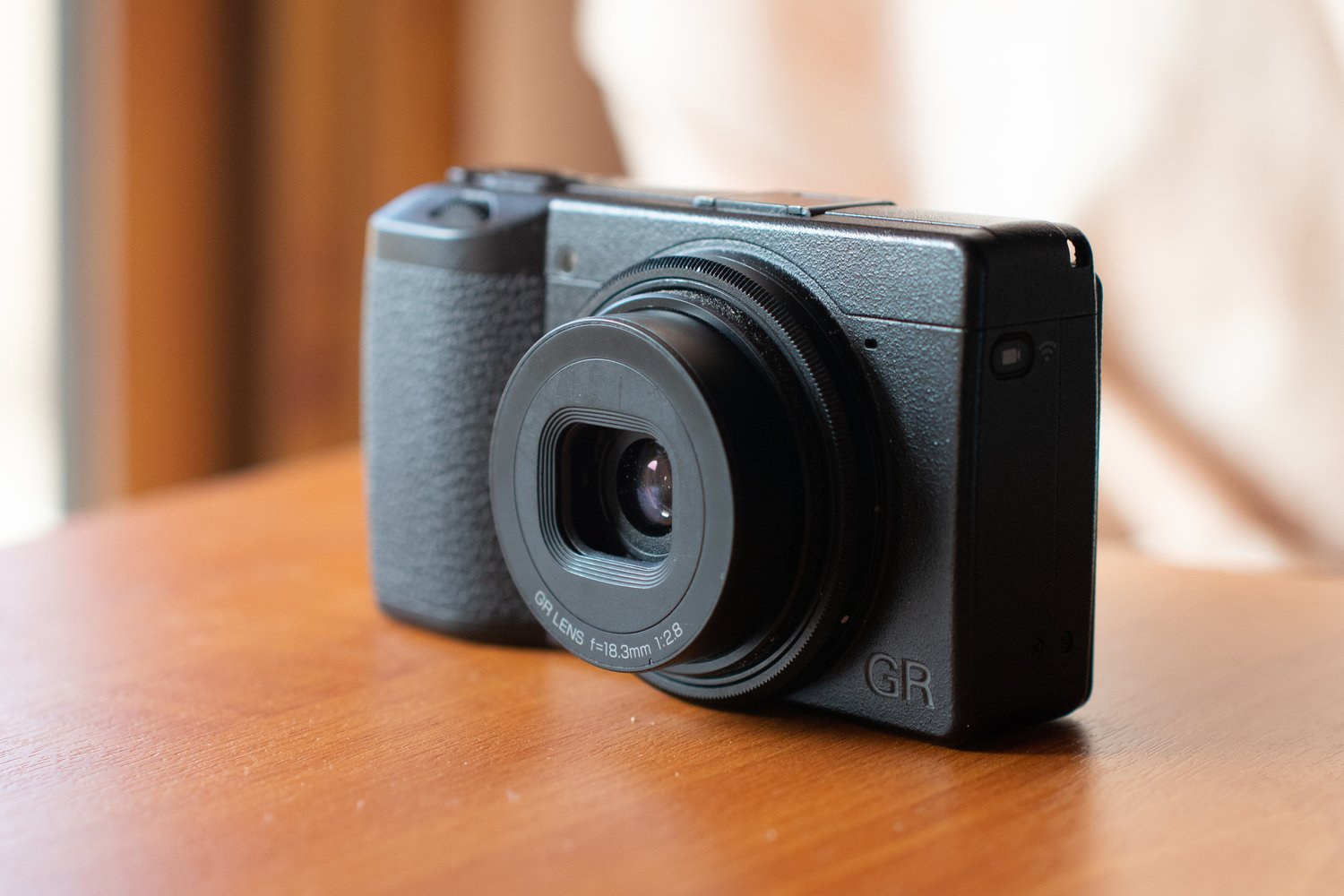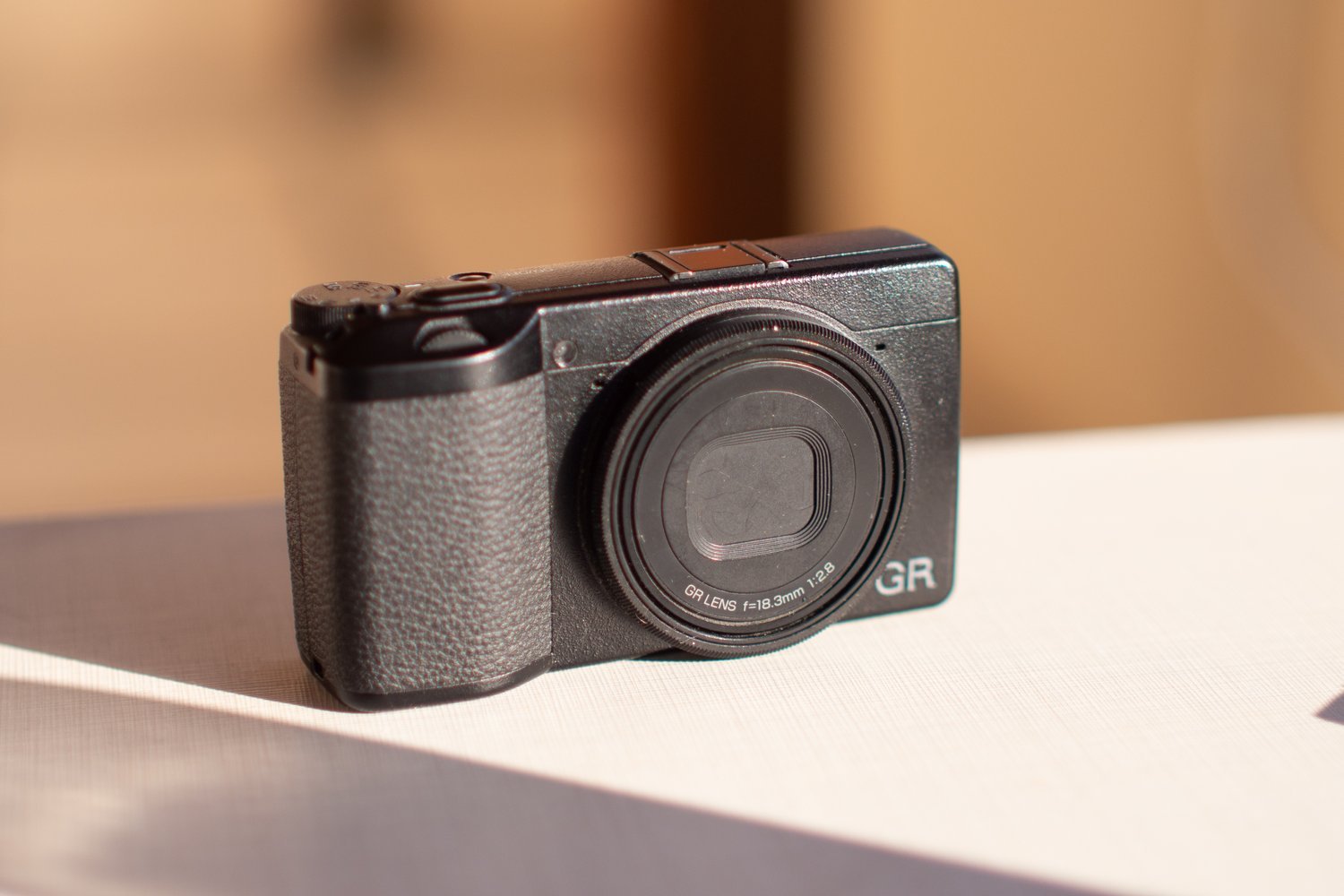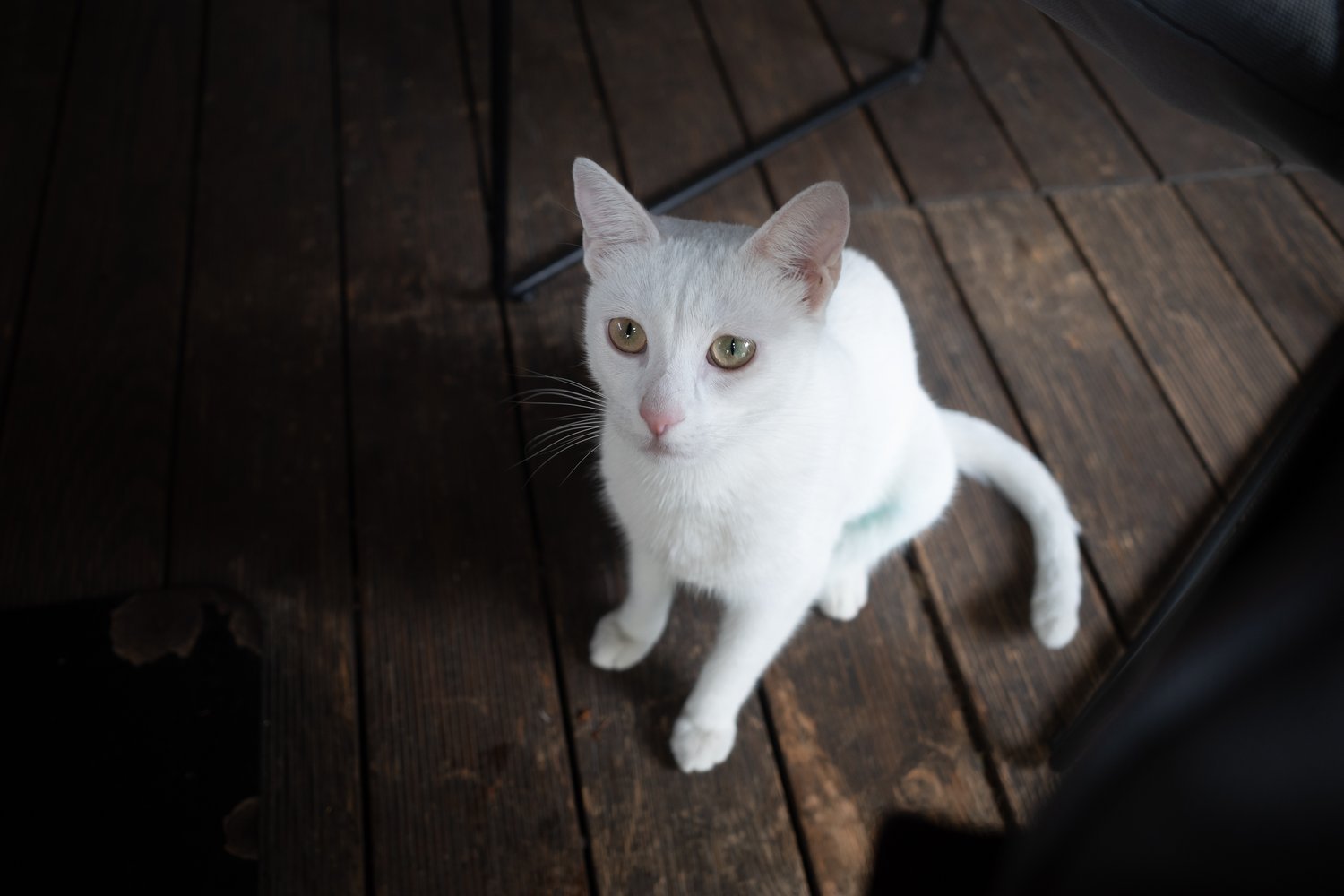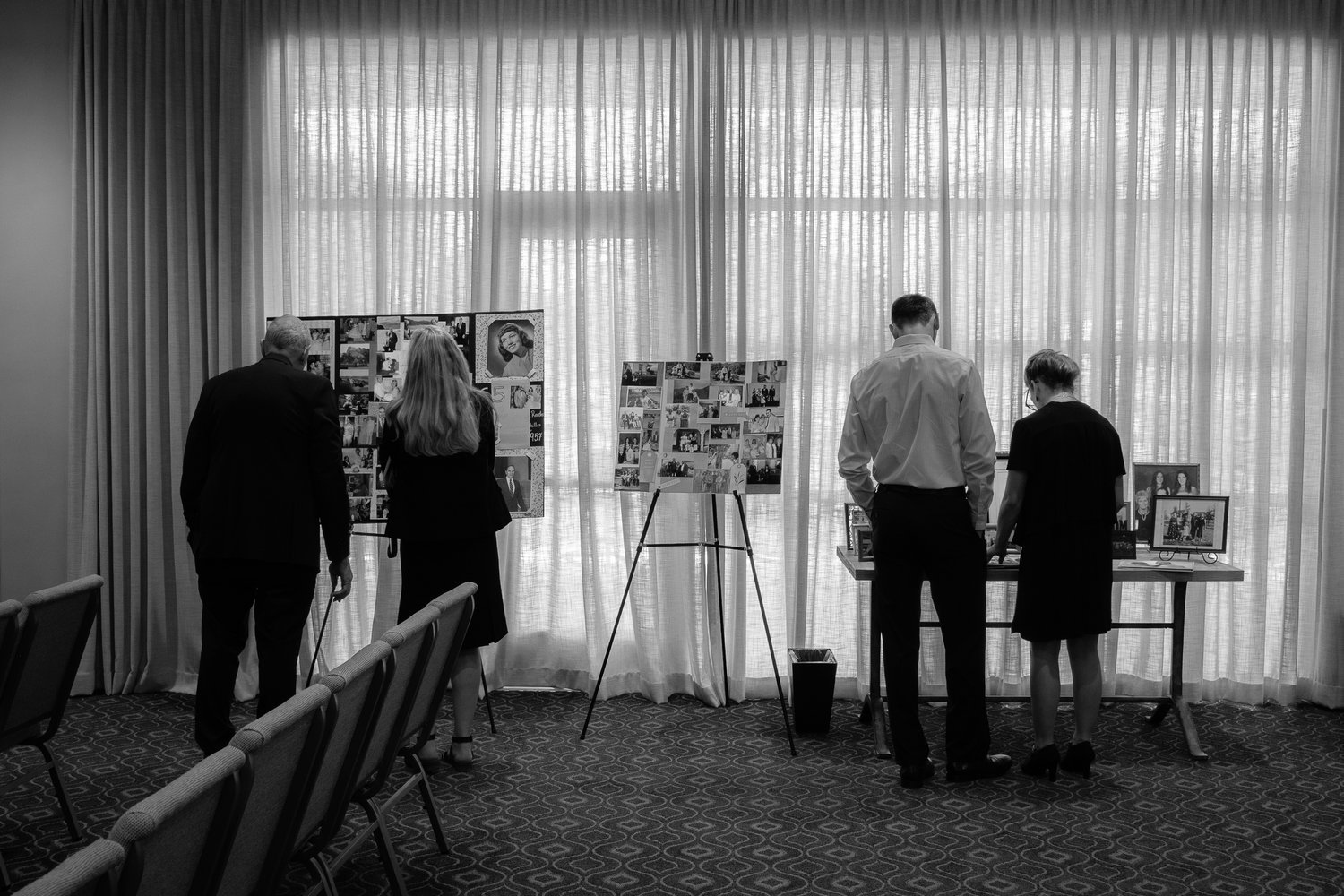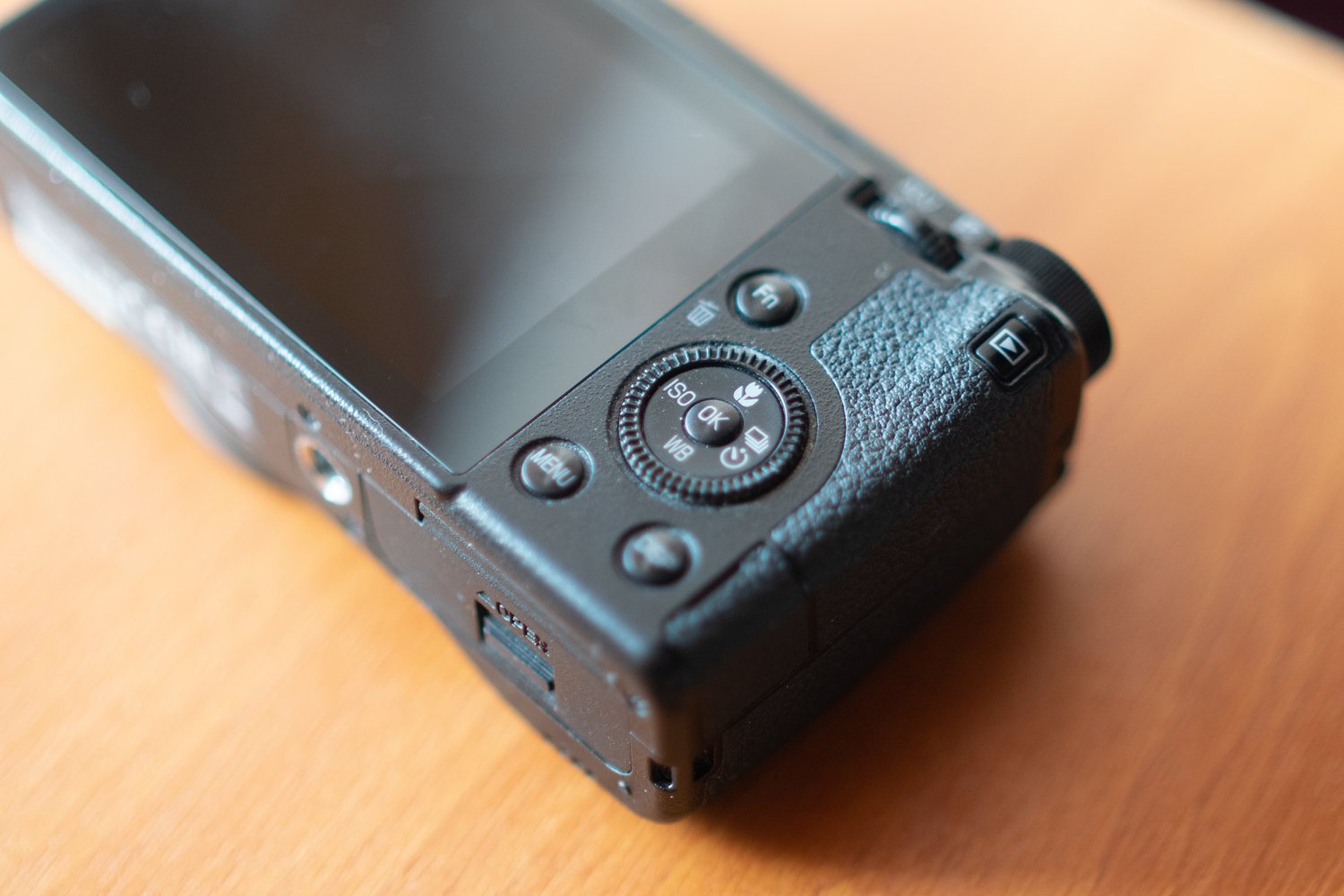Ricoh GR III - My Thoughts After 5,000 Photos
Let me tell you why I almost didn’t buy the Ricoh GR3 before I tell you why I did… and don’t regret it.
The little black magic box. Like my mother used to tell me, “It’s what’s on the inside that counts.”
Look at it… It’s kind of… boring!
To my eye, the Ricoh GR III has little to no aesthetic appeal. It’s a small black rectangular box that doesn’t arouse me in any perceptible way. I know looks aren’t everything, but it’s undeniable that people care about the way their cameras look. Those who are still buying pocketable cameras in 2023, in light of the smart phone revolution, are doing so because they want a unique experience. At least from an aesthetics standpoint, I can’t argue that the Ricoh offers uniqueness, as it doesn’t look too different than the iPhone 7 that typically occupies my other pocket.
So why did I buy it? And why am I happy I did? Let me give you 8 reasons.
My Ricoh GR III next to my indestructible iPhone 7
1. A Truly Pocketable Camera (with a large sensor)
Last February, my wife and I moved from the USA to Europe. Before the move, I was searching for a camera I could take with me to capture the memories of living in a new culture. I wanted a camera that I could fit in the front pocket of my jeans that could literally go EVERYWHERE with me without making itself obvious to everyone around me. I also wanted a camera that could offer me a little more than a typical point and shoot.
If you run a Google search for “pocketable cameras” you’ll find a thousand articles recommending either, cameras that are not truly pocketable or cameras with small 1” (or smaller) sensors.
I’ve seen at least a dozen articles suggesting the Fujifilm x100v and the Lumix LX100 II with their APS-C and M4/3 sized sensors are “pocketable.” I’m not judging, but unless you are wearing cargo pants from the 90’s, you aren’t fitting a Fuji x100 in your pocket, I know because I used to own the X100f. If you are carrying one of those things in your pocket while going through the grocery store, you can count on a conversation with the security guard on the way out.
No problem fitting the GR into my Sunday khakis.
I’ve had several point-and-shoot cameras with 1” sensors over the past few years, including several versions of the Sony rx100, and while they offer a lot of compelling features, I was looking for something offering a bit better image quality.
This is where the Ricoh GRIII really shines. This is the niche that the GR fills that few (if any) other cameras can. The Ricoh is a genuinely pocketable camera. Walking around with it in a pant pocket is comfortable and discreet. Here in Albania, where a lot of people smoke, the camera can easily pass as a pack of smokes.
I take the camera on walks, to church, to the grocery store, to mall, and it allows me to capture memories in great quality.
2. Great Image Quality with Little Compromise.
I must admit, I’m a sucker for good image quality and high resolution. I’ve been shooting with the Rx1r ii and the Sony A7r ii with their 42mp sensors and I’ve loved them both. I often crop my images heavily, especially when using prime lenses, so a camera with good resolving power is a must. Unfortunately, I can’t fit either of them into my pocket. When considering the GR III, I was worried the 24mp coming off the APS-C sensor would leave me longing for my Sony bodies.
But after taking 5,000 pictures in various shooting conditions, I can confidently say the Ricoh hasn’t let me down. The 28mm full-frame equivalent fixed lens is wider than my preferred 35mm, but the combination of the lens and sensor leave a lot of opportunity for adjustments in post. I am still able to crop images significantly and end up with a pleasing result (at least to my eye). I think the Ricoh will offer sufficient image quality for all but the most scrutinous pixel peepers.
My wife’s grandfather’s collection of presidential buttons… shot with Ricoh GR III
Even after heavy cropping, the Ricoh retains nice details.
Close and personal Ricoh GR III, ISO 200, f4.5, 1/500, cropped.
100% crop of the original image
3. Image Stabilization
In my opinion, the image stabilization in this camera is the icing on the cake of an already great feat of engineering. The fact that Ricoh managed to fit a 3-axis IBIS system in this camera is a beautiful and appreciated gift.
I often take pictures while walking down the street (mid-stride) or quick snapshots of things I find interesting. I don’t always have time to set up the shot and use “proper photography form.” Sometimes my settings aren’t set up correctly for the scene in front of me but I don’t have time to adjust them with precision. In circumstances like these, countless images have been saved by Ricoh’s simple image stabilization system. It’s nothing fancy, but it sure is appreciated. On so many occasions it has been the difference between a shot worth saving and one destined for the recycle bin.
The IBIS also comes in handy when shooting in low light. The f2.8 maximum aperture on the lens isn’t slow by any means, but having the stabilization allows you to keep the shutter open just a little bit longer to keep the ISO down and preserve detail. I’ve successfully handheld shots with a shutter up to 1 second on days I didn’t drink too much caffeine.
Now if only Ricoh could improve the video quality on this camera, the IBIS would be great for grabbing quick clips.
The ferry to Italy returning to Vlorë harbor in challenging light… Ricoh GR III, ISO 800, f2.8, 1/30
Handheld 1 second exposure on the Vlorë lungomare… ISO 200, f10, 1/1.
4. The Speed You Need
My Ricoh GR III powers up within a second of pressing the power button. It’s quick, really quick!
I never appreciated this feature until I had it. I can’t tell you how many shots I’ve been able to capture that would have been missed with my old rx100. Sometimes you have only a fraction of second to capture something interesting and slower cameras will leave you pictureless.
Is this feature a necessity? No, a camera that boots up in 2 seconds will still be able to capture 98% of the shots you want, but it’s one of the small features that adds up to make this camera a complete package.
An outdoor vendor selling dried nuts, tea, and oil… Ricoh GR III, ISO 200, f2.8, 1/500.
A cat came to our table looking for some food. He wasn’t fast enough to escape a portrait session with the Ricoh… Ricoh GRIII, ISO 200, f2.8, 1/60.
At 1/60th of a second underneath a dark table, I’m happy with the details.
5. Boring = Subtle
In the introduction of this review I told you how boring the Ricoh GR III was to my eye and how I considered that one of it’s unappealing qualities. But in a way, it’s unattractive nature is one of its greatest strengths. The Ricoh doesn’t draw my eye or the eye of others.
Although I shoot various genres of photography with the GR3, it was primarily designed for street shooters. Typically, street shooters want to remain as subtle as possible as not to bruise the scene they are capturing. The Ricoh is arguably the most subtle largish sensor camera a person can own. It’s all black with a matte finish and the lens extends less than an inch when powered on.
It’s also great for capturing family moments. I think every family includes one member who HATES having their photo taken. In my case, it’s my mom. If she sees a camera she immediately freezes and asks why I’m are taking pictures, as if I’m planning to sell her identity on the dark web. The larger and flashier my camera, the more scenes get ruined by its intrusion. The more subtle my camera, the more memories I get to keep of her and the people I love.
I took the Ricoh to a funeral in my pocket. The snap focus and leaf shutter helped me capture quick and quiet memories without bothering anyone… Ricoh GR III, ISO 200, f3.5, 1/50.
6. Snap Focus
Ricoh’s snap focus feature allows you to set a predetermined focus distance which the camera will default to when the user performs a quick full press of the shutter.
For example, let’s say you set the camera’s snap focus distance to 2.5 meters. If you power the camera on, point it at an object, and full press the shutter, whatever is 2.5 meters ahead of you will be in focus. The feature is great when shooting from the hip or shooting blind. There is no need to mess with single point AF, or face detection, no need to half press the shutter and wait for focus confirmation, just a full press and you’ve got a useable shot (as long as you’re good at estimating distances). It is very similar, but simpler, than zone focusing on a manual lens.
I knew about the feature when I bought the camera but I never thought I’d use it. These days, I hardly go a day without using it! As you use it more, you get better at estimating your in focus area and the 28mm wide angle lens gives you space to reframe a shot if your hip shooting technic still needs a little practice.
There are various settings for snap focus, anything from 1 meter to infinity and beyond.
I shot this image blind, with snap focus, and with the camera pointed 135 degrees behind me (like a true cowboy… from the hip)… Ricoh GR III, ISO 200, f4, 1/320, 80% crop.
7. Built in Memory… Thank you Ricoh!
If you’re like me, you like to take pictures throughout the day and then relax in the evening by editing your captures on the computer. Such a habit requires the daily transfer of your SD card to your computer and then, hopefully, a return of the card to the camera.
I’m not a particularly forgetful person, but every once in a while I forget to put my SD card in my Ricoh and walk out of my house SDless. If I forget the SD card in my Sony or Olympus, it means I won’t be taking any pictures that day, but not so for the GR3. The Ricoh GR3 comes with 2gb of internal storage, enough to save approximately 40 RAW files.
It’s easy to move photos saved to the internal memory to an SD card.
I think this feature is brilliant, not because it’s anything revolutionary, but because it addresses a common problem and removes the potentiality of it occurring. By adding 2gb of internal memory, Ricoh showed that they recognized humans are going to be using their cameras, and sometimes humans forget things.
Thanks Ricoh for having our backs!
Unfortunately, the Ricoh’s face recognition picked up on my ugly face when taking this blind selfie.
8. Macro Mode at the Click of a Button
I don’t own any macro lenses and I don’t shoot macro with any regularity, but every once in a while I see something that deserves to be captured in all its macro glory. On occasions like these, I’m thankful the GR3 has a built in macro mode, and it’s a good one.
The Ricoh can focus on objects as close as 2cm from the front of the lens. The images are crisp and beautiful and more than sufficient for my needs. By default, macro mode can be accessed by pressing up on the directional pad (the little flower symbol). As I mentioned, it isn’t a feature I need all the time, but it’s part of what makes this camera a complete package.
A vicious bug that savagely attacked me. You can see the water droplets hanging from his antenna… GR III, ISO 100, f3.2, 1/125.
The Stuff I Don’t Like… Wishlist for the GRIV
Now that I’ve gushed over this camera for 10 minutes, let me tell you a few of the areas where the Ricoh could improve.
Video quality - The Ricoh can shoot video at 1080 up to 60fps, but unfortunately, the quality of the footage is baaad! I don’t have particularly high standards, but the Ricoh should not be considered for people who need to shoot video. I’m not kidding when tell you the original Sony rx100 (mark i) shoots better video than the Ricoh. The GR iii constantly struggles to achieve focus, even on the most obvious subjects and the full HD 1080p video looks more like 720p. I would love to see Ricoh improve this feature, if only a little, because it would be super useful to be able to grab some quick video clips with this camera.
Tilt Screen Please! - It isn’t a deal breaker for me but I would adore this camera even more if Ricoh had created it with a tilt screen. The Sony rx100 line and Fujifilm’s x100 series managed the addition of a tilt screen without adding significant bulk to their previous designs. If Ricoh could add something similar, I would upgrade to a GR IV in a heartbeat. Even if Ricoh had to add a millimeter or two to the overall thickness, in my opinion, it would be worth it.
One of my favorite photos of my wife. Beautiful lady, beautiful view, and a good example of the Ricoh’s strong dynamic range performance… Ricoh GR III, ISO 200, f5, 1/640.
Final Thoughts and Conclusion
If you can’t tell, I love this camera and would recommend it to anyone looking for compact image quality.
I’m not a Ricoh GR iii fan because I like the aesthetics of the device. I’m not a Ricoh fan because Ricoh is a camera status symbol. I’m not a Ricoh fan because I have an emotional attachment to the brand name. I’m not a Ricoh fan because they sent me the camera for free for testing (I bought this camera with my own money on ebay).
I’m a Ricoh fan because they created a great product that fits my needs. I went from an unconvinced hesitant buyer to a proud evangelistic Ricoh owner, and I think that is some of the highest praise you can give to a device. The Ricoh GR iii is good at completing the job for which it was built. It captures moments of time I will be able to look back on and cherish in future years.
It is a constant companion and trustworthy friend… and who can ask for more than that?!
If you are interested in buying a Ricoh GR III please consider buying through my affiliate link on Amazon: GR III on Amazon
The affiliate link cost you nothing extra and I get a little commission for recommending the product… Thanks!
